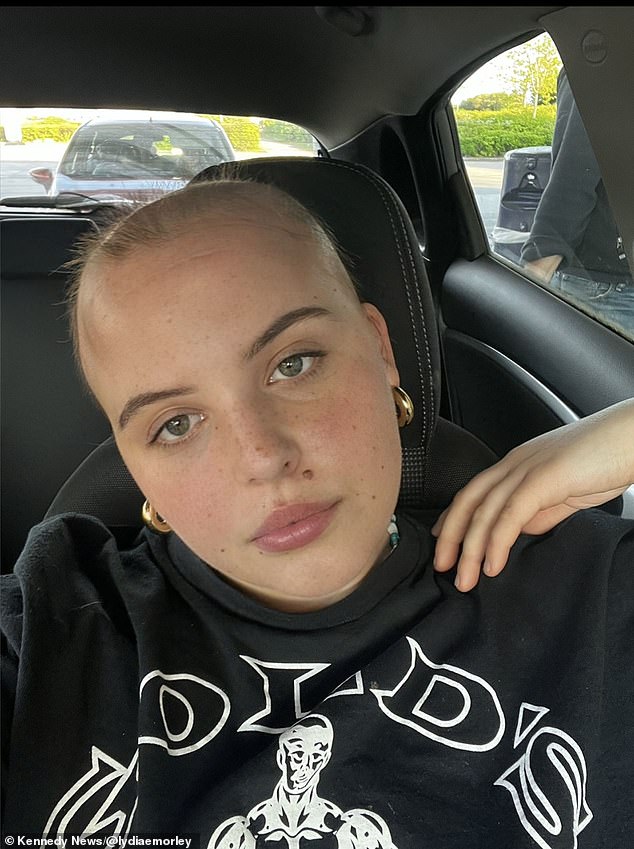A young woman has stated that being infected with Covid eight times left her bald and revealed the courage it took for her to leave the house without a wig.
Lydia Morley, 23, from Newport, Wales, first noticed her long, thick brown hair thinning and falling out in the shower last November.
“Every time I brushed my hair in the shower, I got proper strands,” Lydia said. “It was getting to the point where it was a little strange.”
After his father noticed a bald spot on the back of his head in January of this year, Lydia made an appointment with her family doctor and was diagnosed with alopecia areata, a disease that occurs when the immune system attacks the hair follicles and causes them to fall out.
Doctors initially attributed the diagnosis to stress, but Lydia, who claims to be the “least stressed person ever”, now believes her alopecia could be due to long Covid.
Lydia Morley (pictured) was diagnosed with alopecia areata in January this year.

The 23-year-old first noticed her long brown hair falling out in the shower in November 2023. Pictured: Lydia in a wig after her alopecia diagnosis.

Lydia wears a brown wig. She now owns a large collection of wigs, but also feels confident enough to leave the house without one.
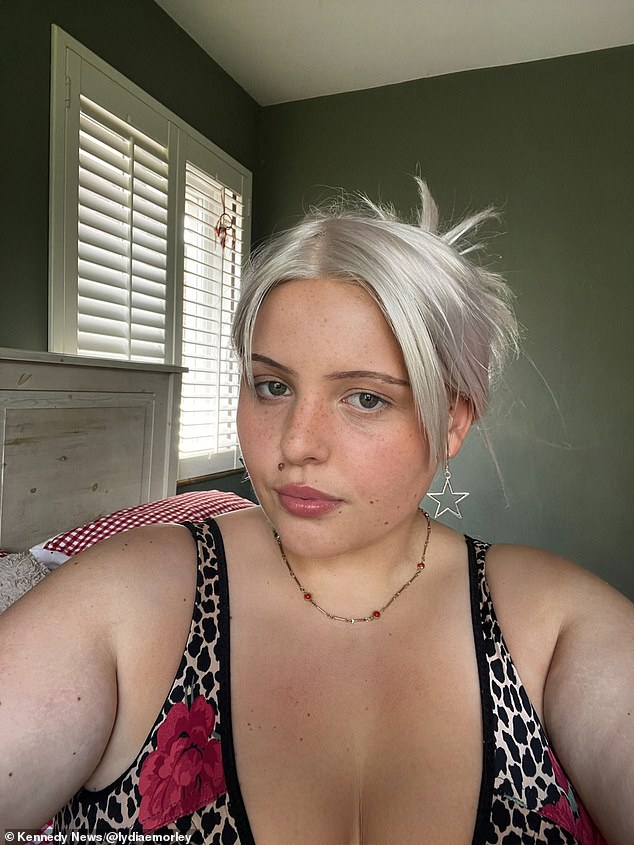
Lydia wears a platinum blonde wig which is her ‘favourite’ as it is ‘very different’ to how her hair was before.
The vintage store supervisor said she has suffered eight Covid attacks since 2020.
She said: ‘I think after having it so many times my immune system has become weaker and weaker.
“I had Covid at the end of November for the eighth time and then I started seeing my hair falling out.”
Although doctors agreed that long Covid could be the cause, they emphasized that alopecia is not fully understood.
NHS advice said: ‘Hair is lost because it is affected by inflammation. The cause of this inflammation is unknown, but it is believed that the immune system, the natural defense that normally protects the body from infections and other diseases, may attack growing hair.
“It is not fully understood why this may occur, nor is it known why only localized areas are affected and why hair usually grows back.”
Lydia said: ‘The doctors mentioned it could be (Covid), but alopecia is one of those things where they don’t always know exactly why it happens.
“I personally believe that and the doctors said this could be the cause of the situation, but they also said it could be a million other things too.”
Five months after her diagnosis, Lydia lost 80 percent of her hair and couldn’t recognize herself in the mirror.
“I’m a very outgoing person and (alopecia) really takes that away from you because people don’t realize how much of their identity lies in their appearance.
“People like to say they don’t care about appearance or physical attributes, but when this is taken away from you, it really changes the way you see yourself.”
The young woman whose camera roll was previously full of selfies began avoiding cameras as her self-confidence plummeted.
She said: ‘My camera roll turned towards me checking to see if I had any new patches (on my head) or checking to see if I had gotten worse.
‘As a child, it was very difficult during those weeks and months when I shaved my head for the first time.
“You don’t feel like a woman enough.”
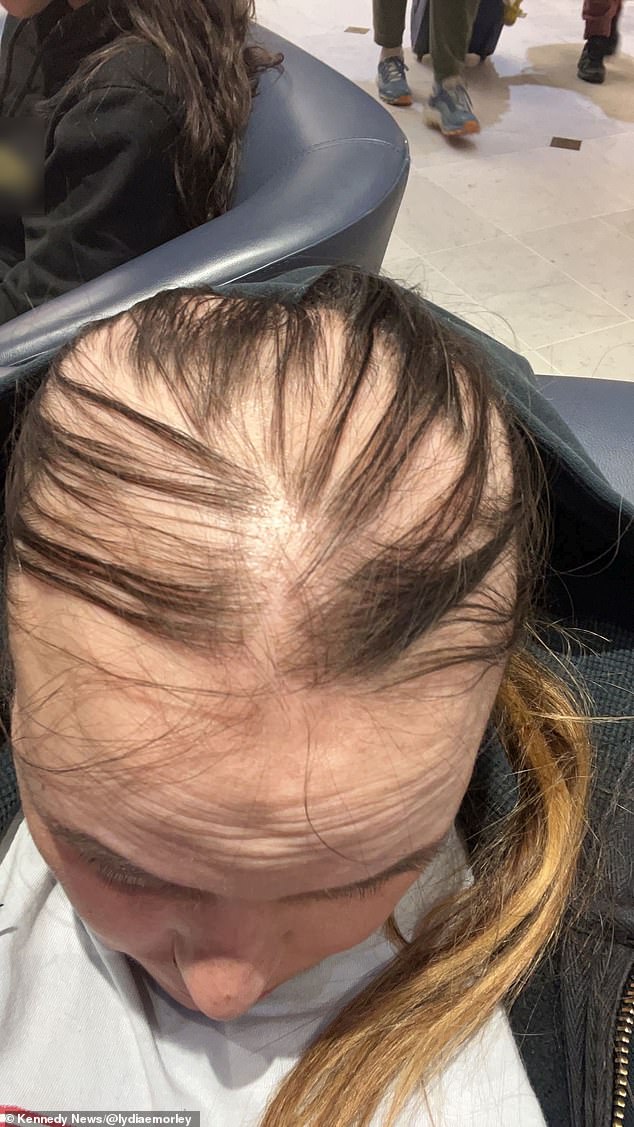
Lydia’s hair before she shaved it all off for charity. He started noticing it falling out in November of last year.
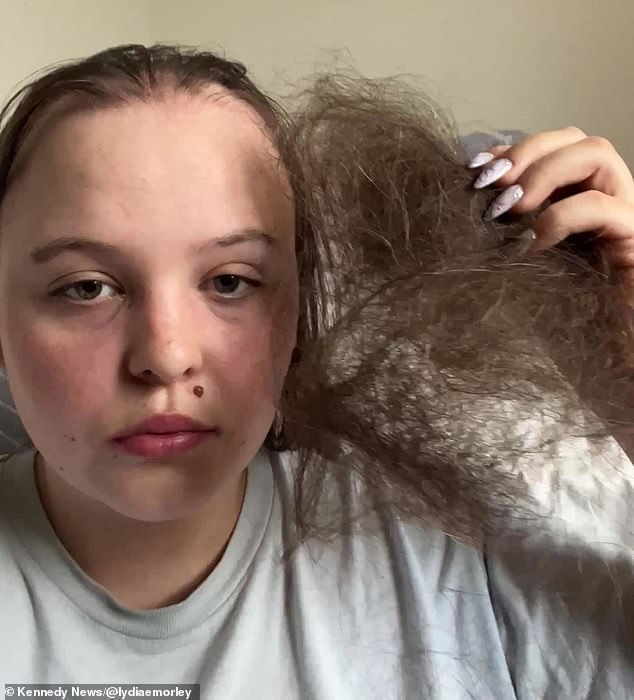
Within five months of being diagnosed with alopecia, Lydia lost 80 percent of her hair.
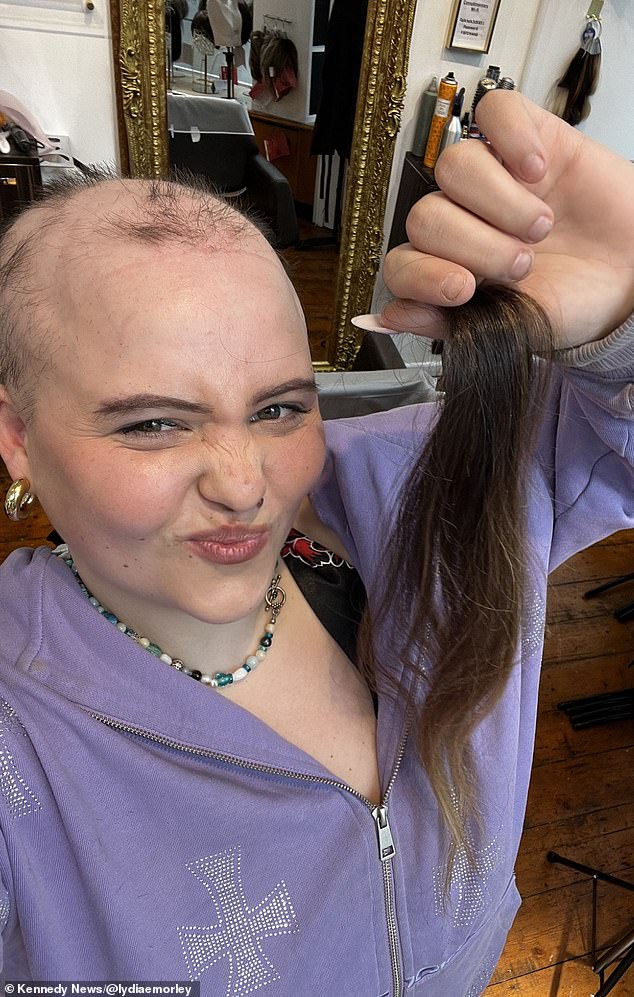
Lydia said she felt more confident after shaving her hair and donating the locks to charity.
Only when Lydia decided to shave off her remaining locks for charity and go completely bald did she see her confidence blossom.
“A fully made-up face with a bald head looks great on a woman and has made me feel even more feminine.”
Since she shaved off all her hair, Lydia said she is experiencing some growth.
‘The path of regrowth is difficult because not everything is achieved at the same time.
‘It is dense and some parts are longer and others shorter.
“They’re really positive signs of growth and it’s amazing to see that they’re coming back and it’s given me a little more perseverance.”
“My hair might fall out again, so you need to distance yourself from it.” As much as it is a good sign to see him growing, I don’t trust it.
“As for eyebrows and eyelashes, I haven’t seen any growth yet, but it’s just a waiting game.”
Despite promising signs of regrowth, Lydia wears a variety of synthetic and “real hair” wigs.
“Most of my wigs are synthetic,” Lydia said. ‘I have a real hair one that is very similar to how my hair was before and I use it every day.
‘My blonde wig is probably my favorite right now because it’s so different to how my hair was before.
‘If someone had told me a year ago that someone would compliment me on having a shoulder-length peroxide blonde bob, I would have said “you’re crazy.”
But Lydia emphasized that she now feels confident leaving the house without a wig.
She said: “It’s nice to feel comfortable in lots of different styles and I don’t have to look the same every day.”

Although Lydia enjoys changing up her look with a variety of wigs, she said she is confident enough to leave the house without one. (Pictured: a wig shop in Peckham, south London)
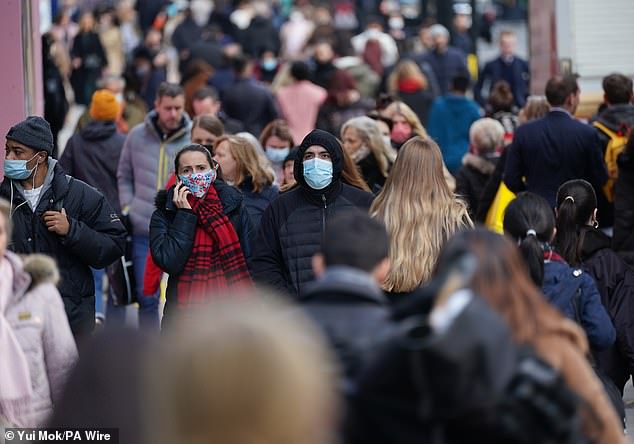
Lydia believes her alopecia could be caused by long Covid. It said it has suffered eight attacks of the virus since 2020. (Pictured: Shoppers wearing face masks on Oxford Street, London in 2021.)
Lydia is now raising awareness about her journey with alopecia to help others talk about their experiences with hair loss.
Offering advice to other young women diagnosed with alopecia, Lydia said: “Shave and raise a little money to help someone else and you’ll feel a million times better.”
After sharing a video of her hair journey over the past five months on TikTok, her post went viral, racking up 179,000 views and over 8,000 likes.
One user wrote: ‘Legit. He looks good bald. What a vibe.”
Another commented: “I gasped when I saw your photo with the brown wig.”
A third wrote: ‘I have it too. It is an internal battle that you have to accept, but once you take the leap, it is very healing.”
A fourth commented: “The ultimate test of sexiness is being able to look sexy without your hair and you passed with flying colors darling.”


